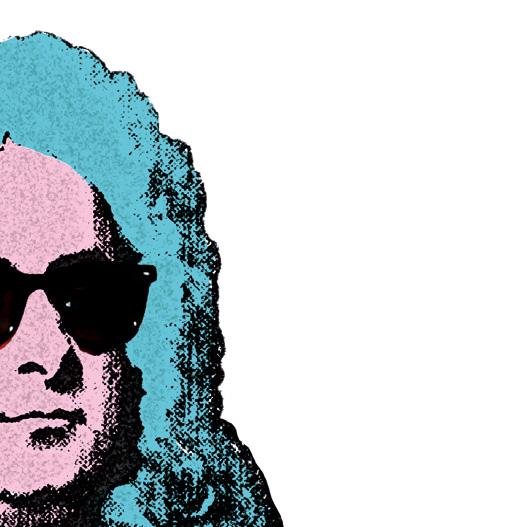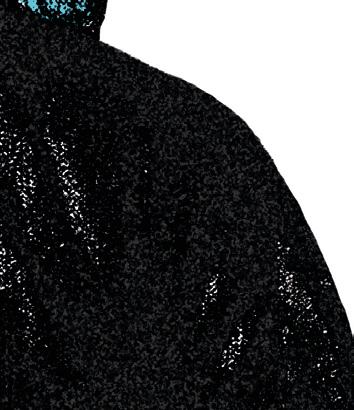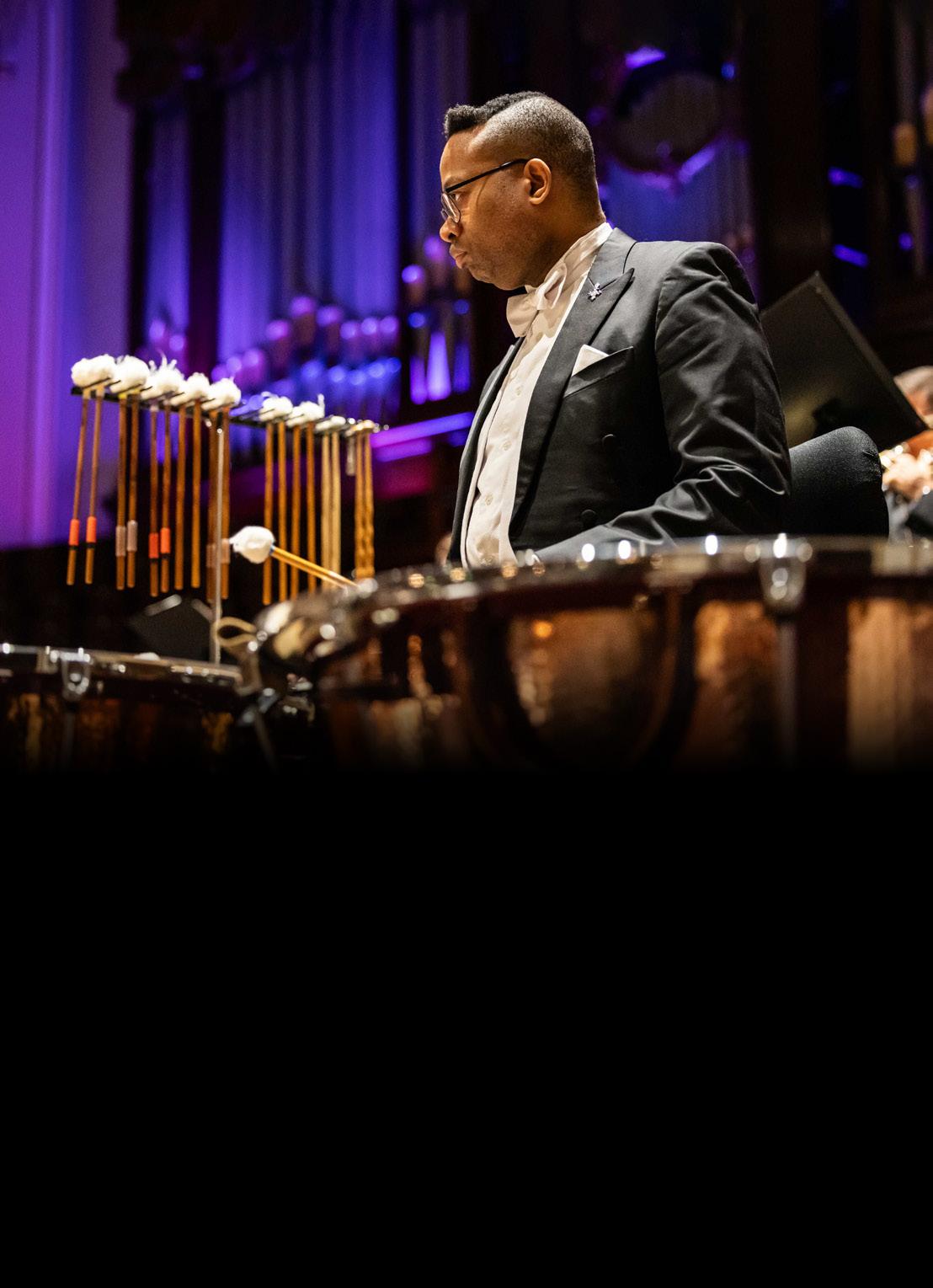

Beethoven’s Eroica Symphony
Usher Hall, Edinburgh Fri 24 Oct 2025 7.30pm Glasgow Royal Concert Hall Sat 25 Oct 7.30pm



Beethoven’s
Eroica Symphony
Usher Hall, Edinburgh Fri 24 Oct 2025 7.30pm
Glasgow Royal Concert Hall Sat 25 Oct 7.30pm
Some pieces are classics for a reason, with tunes so good they just never stop feeling fresh. Beethoven’s sweeping Eroica Symphony caused a sensation when it was first performed, and over 200 years later classical music is still reeling from the aftershock. David Niemann kicks the evening off with two powerful songs of freedom – a blazing testament from postwar Poland and an explosive, specially commissioned new showcase by Matthew Rooke for RSNO timpanist Paul Philbert.
PANUFNIK Sinfonia Sacra (Symphony No3) [22’]
MATTHEW ROOKE Tamboo-Bamboo: Concerto for Timpani [16’]
RSNO COMMISSION: WORLD PREMIERE
Tamboo-Bamboo: Concerto for Timpani is supported by the Marchus Trust
INTERVAL
BEETHOVEN Symphony No3 in E flat Major Op55 Eroica [47’]
David Niemann Conductor
Paul Philbert MBE Timpani
Royal Scottish National Orchestra
Presented in partnership with Adam Mickiewicz Institute, as part of the UK/Poland Season 2025, a vibrant programme spanning 100+ events across 40 cities in both countries. UK/Poland Season 2025 is organised by the British Council, the Adam Mickiewicz Institute and the Polish Cultural Institute, financed by the Ministry of Culture and National Heritage and the Ministry of Foreign Affairs in Poland

The Glasgow performance will be recorded for the RSNO Archive. Supported by the Iain and Pamela Sinclair Legacy.
If viewing these notes at the concert, please do so considerately and not during performances. Please silence all mobile telephones and alerts, and refrain from taking photographs, without flash, until the end of each piece.
Beethoven Seven
EDINBURGH FRI 7 NOV: 7.30pm
SAT 8 NOV: 7.30pm
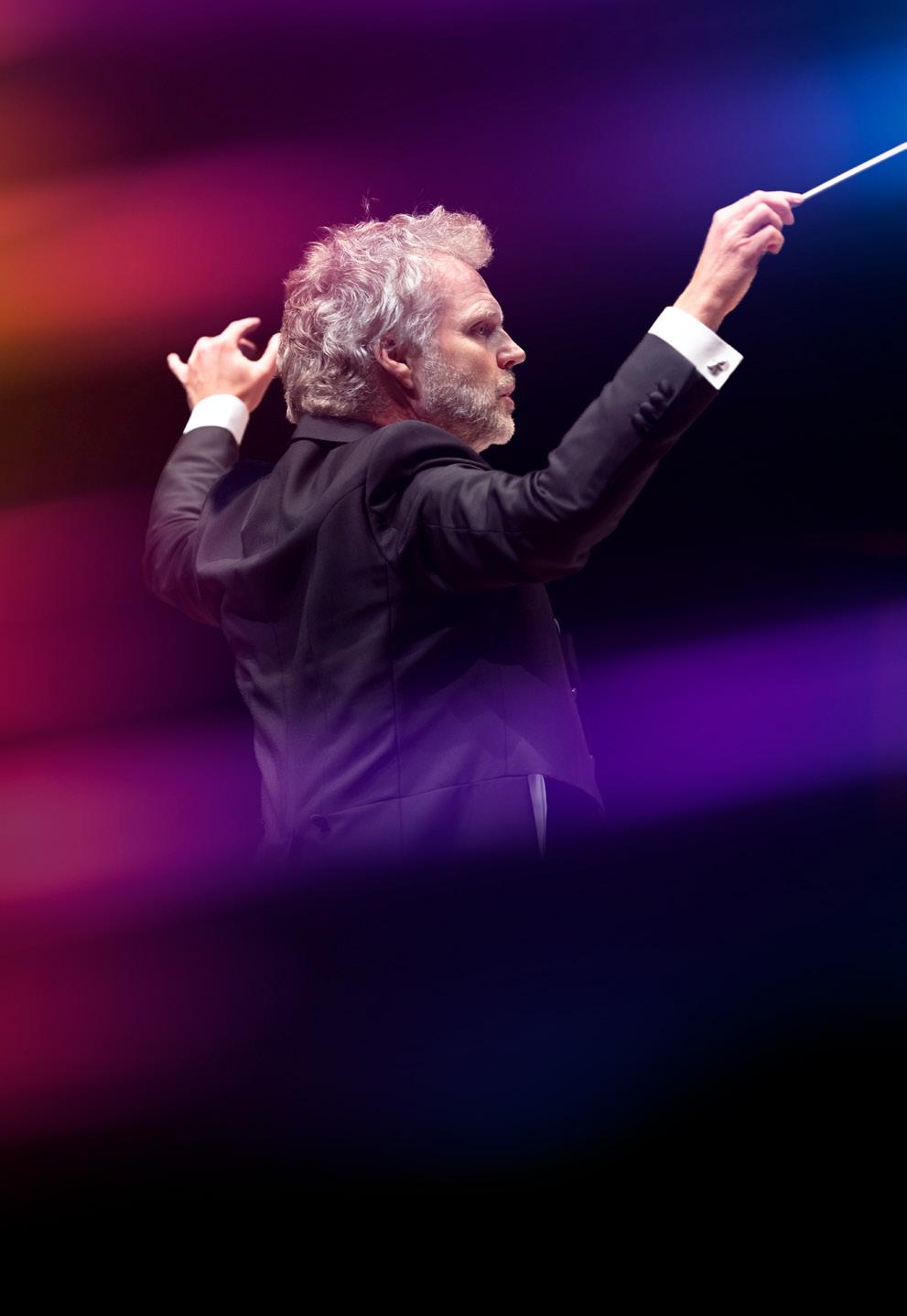
In memory of Tom Bruce-Jones
Cheryl Frances-Hoad You Have to be Realistic About a Perfect Day World Premiere
Vaughan Williams Songs of Travel
Mendelssohn Overture to Son and Stranger
Beethoven Symphony No7
Thomas Søndergård Conductor
Andreas Landin Baritone
RSNO Changed Voices
Frikki Walker Director, RSNO Changed Voices
Paul Whittaker BSL Performer
Welcome
Welcome to this evening’s concert. Unfortunately, due to illness, the advertised conductor, Anthony Parnther, is unable to join us but we are incredibly grateful to David Niemann for stepping in.
The Orchestra has just returned from a two-week European tour with Music Director Thomas Søndergård and soloists Francesco Piemontesi, Magdalene Ho and Jan Lisiecki, performing nine concerts in seven countries, including a three-night residency in Salzburg. It was a real pleasure to join the Orchestra and meet so many European supporters and colleagues along the way. With the RSNO Chorus’ tour to Budapest also having just finished, our presence in Europe continues to grow and I’m looking forward to what our future touring holds.
Tonight is special for a number of reasons, not least because we have the privilege of performing the world premiere of Matthew Rooke’s new timpani concerto, commissioned by the Orchestra for our Principal Timpanist Paul Philbert. The RSNO also has a unique link with the opening piece on this evening’s programme, Panufnik’s Sinfonia Sacra, which you can read about in the notes.
I hope some of you were able to attend the pre-concert talk at which we screened our new, short documentary, Connecting Scotland and Poland: Through Music and Stories, created in partnership with the Adam Mickiewicz Institute. The film delves into a series of music workshops, inspired by the RSNO’s flagship early years programme Yoyo & The Little Auk, delivered to young people at the Sikorski Polish School in Glasgow. The documentary will be released online in November.
I hope you have an enjoyable evening.
Alistair Mackie CHIEF EXECUTIVE
Keep in touch with the RSNO
Royal Scottish National Orchestra
19 Killermont Street
Glasgow G2 3NX T: +44 (0)141 226 3868
Scottish Company No. 27809
Scottish Charity No. SC010702
Royal Scottish National Orchestra
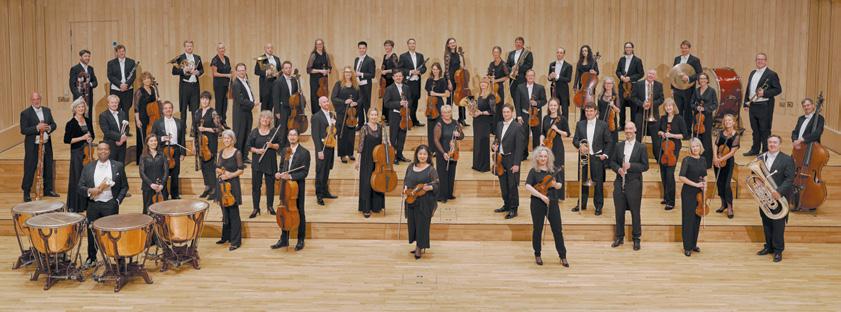
Formed in 1891 as the Scottish Orchestra, the company became the Scottish National Orchestra in 1950 and was awarded Royal Patronage in 1977. Many renowned conductors have contributed to its success, including Sir John Barbirolli, Walter Susskind, Sir Alexander Gibson, Neeme Järvi, Walter Weller, Alexander Lazarev and Stéphane Denève.
The Orchestra’s artistic team is led by Danish conductor Thomas Søndergård, who was appointed Music Director in 2018. In March 2024, Austrian-born conductor, composer and musician Patrick Hahn became the Orchestra’s Principal Guest Conductor.
The RSNO is supported by the Scottish Government and is one of the Scottish National Performing Companies. The Orchestra performs across Scotland, including concerts in Glasgow, Edinburgh, Dundee, Aberdeen, Perth and Inverness, and appears regularly at the Edinburgh International Festival and BBC Proms. The RSNO has made recent tours to China and Europe.
The RSNO has a worldwide reputation for the quality of its recordings, receiving a 2020 Gramophone Classical Music Award for Chopin’s
Piano Concertos (soloist: Benjamin Grosvenor), conducted by Elim Chan, two Diapason d’Or awards (Denève/Roussel 2007; Denève/Debussy 2012) and eight GRAMMY Award nominations. In recent years, the RSNO has increasingly recorded soundtracks for film, television and video games, with notable titles including Horizon: An American Saga (Warner Bros), Life on Our Planet (Netflix), Star Wars Outlaws (Ubisoft) and The Woman King (Sony Pictures). The Orchestra records at its award-winning in-house facility, Scotland’s Studio, in Glasgow.
The RSNO believes that music can enrich lives, and aims to inspire, educate and entertain people throughout Scotland and beyond with its performances, recordings and engagement programmes. Supporting schools, families, young professionals and wider communities, the RSNO delivers high-quality initiatives for all ages and abilities.
FIRST VIOLIN
Lena Zeliszewska
ASSOCIATE LEADER
Tamás Fejes
ASSISTANT LEADER
Patrick Curlett
Elizabeth Bamping
Ursula Heidecker Allen
Lorna Rough
Veronica Marziano
Alan Manson
Susannah Lowdon
Caroline Parry
Joe Hodson
Kate Migudda
Tessa Henderson
Rosamund Noll
SECOND VIOLIN
Marion Wilson
ASSOCIATE PRINCIPAL
Jacqueline Spiers
Sophie Hamilton
Robin Wilson
Emily Nenninger
Paul Medd
Anne Bünemann
Sophie Lang
Helena Rose
Kirstin Drew
Colin McKee
John Robinson
VIOLA
Felix Tanner
ASSOCIATE PRINCIPAL
Asher Zaccardelli
Lisa Rourke
Claire Dunn
Francesca Hunt
Maria Trittinger
Beth Woodford
Sasha Buettner-Burnley
Susan Buchan
Aaron Morrison
On Stage
CELLO
Pei-Jee Ng
PRINCIPAL
Betsy Taylor
Kennedy Leitch
Yuuki Bouterey-Ishido
Rachael Lee
Sarah Digger
Gunda Baranauskaitė
Robert Anderson
DOUBLE BASS
Nikita Naumov
PRINCIPAL
Kate Brooke
Michael Rae
Moray Jones
Alexandre Cruz dos Santos
Ricardo Taphadinos
FLUTE
Jack Welch
GUEST PRINCIPAL
Jenny Farley
Helen Benson
GUEST PRINCIPAL PICCOLO
OBOE
Adrian Wilson
PRINCIPAL
Peter Dykes
Henry Clay
PRINCIPAL COR ANGLAIS
CLARINET
Timothy Orpen
PRINCIPAL
William Knight
Duncan Swindells
PRINCIPAL BASS CLARINET
BASSOON
David Hubbard
PRINCIPAL
Jamie Louise White
Iona Garvie
GUEST PRINCIPAL CONTRABASSOON
HORN
Amadea Dazeley-Gaist
PRINCIPAL
Alison Murray
Andrew McLean
David McClenaghan
Helen Jacklin
David Wheeler
Martin Murphy
TRUMPET
Roeland Henkens
GUEST PRINCIPAL
Brian McGinley
Tom Thornton
Robert Baxter
TROMBONE
Dávur Juul Magnussen
PRINCIPAL
Cillian Ó Ceallacháin
Jonny Lovatt
GUEST PRINCIPAL BASS TROMBONE
TUBA
Craig Anderson
GUEST PRINCIPAL
TIMPANI
Simon Archer
GUEST PRINCIPAL
PERCUSSION
Simon Lowdon
PRINCIPAL
Colin Hyson
Alasdair Kelly
HARP
Pippa Tunnell
PIANO
Lynda Cochrane
David Niemann Conductor

German conductor David Niemann is establishing himself as one of the most gifted conductors of his generation. Second-prize winner of the 2015 Malko Conducting Competition, the same year he was appointed Assistant Conductor at the Opéra Orchestre National Montpellier, where he worked alongside chief conductor Michael Schønwandt for three seasons. He is developing a broad mainstream repertoire and is an equally persuasive advocate of 20th-century and contemporary works.
Recent and forthcoming highlights include his Berliner Philharmonie debut with Ensemble Modern, as part of the Berlin Musikfest, alongside returns to the Orchestre de Picardie and the RSNO. Recent projects with the RSNO have included conducting the finals of the Scottish International Piano Competition and a New Year national tour. Other highlights include a full staging of the Mozart Requiem at Malmö Opera, with dancers from the Skånes Dansteater and choreography by Örjan Andersson, a revival of Elena Kats-Chernin’s Der herzlose Riese with
the Luxembourg Philharmonic, a return to the Kammerakademie Potsdam and his debut with the Württembergische Philharmonie Reutlingen.
Further highlights have included successful debuts with the Konzerthausorchester Berlin, Aalborg Symfoniorkester, Deutsches Symphonie-Orchester Berlin, Orchestre National de Belgique and Ensemble Modern (Hamburg Elbphilharmonie); the world premiere of Kats-Chernin’s Der herzlose Riese; a special interdisciplinary project with the Junge Deutsche Philharmonie featuring new commissions with the most renowned artists of the Germanspeaking poetry slam scene; and Schoenberg’s A Survivor from Warsaw, paired with Beethoven’s Symphony No9, to open the Barcelona concert season of the Vallès Symphony in the Palau de la Música Catalana. Engagements have also included a series of projects with the Qatar Philharmonic, visits to the Orchestre National du Capitole de Toulouse; main season and regional concerts with the Opéra Orchestre National Montpellier; and concerts with the Opéra National de Lorraine and Orchestre National Avignon-Provence.
His many projects for the Opéra Orchestre National Montpellier included staged productions of Schumann’s Manfred, a double bill of Ravel’s L’enfant et les sortilèges and Szymon Laks’ L’Hirondelle inattendue, and La boîte à joujoux –Debussy’s ballet for children.
Unfortunately, Anthony Parnther, the advertised conductor for these concerts, is unwell. The RSNO is extremely grateful to David Niemann for stepping in at short notice.
Scotland’s National Orchestra
Sat 1 Nov 2025, 7pm New Auditorium, Glasgow Royal Concert Hall
Join us for a unique celebration of Scotland’s National Orchestra marking the tenth anniversary of our New Home in Glasgow.
Enjoy spectacular music performed by the Royal Scottish National Orchestra, drinks with canapés showcasing the best of Scottish produce and a charity auction with prizes generously donated by the New York

Philharmonic, Kimpton Blythswood Hotel, Moira Patience and many more. The rest of the evening will be spent dancing the night away at our celebratory ceilidh, with music performed by the fantastic RSNO Ceilidh Band.
All funds raised at this event will support the activity of the RSNO.
Sir Andrzej Panufnik (1914-91)
Sinfonia Sacra (Symphony No3)

FIRST PERFORMANCE
Monte Carlo, 12 August 1964
DURATION 22 minutes
1. Vision I
2. Vision II
3. Vision III
4. Hymn
On Holy Saturday 966, Mieszko I of the powerful Piast dynasty was baptised. His conversion to Christianity was a shrewd political decision, an attempt to unite the dispersed tribes that occupied the land between the Carpathian Mountains and the Baltic Sea under a single faith, and to gain influence among the rising Christian powers of Europe, notably the Holy Roman Empire and Bohemia. In one fell swoop, Mieszko’s baptism gave birth to the Polish state and firmly established its religious foundations.
One thousand years later, a Polish émigré living in Britain was asked to write a piece of music to commemorate this occasion. Panufnik must have been torn. He had risen through Poland’s musical
establishment, studying at the national conservatory, and had gone on to become music director of both the Warsaw and Kraków Philharmonic orchestras. He won prizes named after Poland’s most famous musical sons, Szymanowski and Chopin. Indeed, his own development as a composer was intimately connected to Poland’s political struggles; in 1944, during the Warsaw Uprising, his entire oeuvre was destroyed in the fires, leading to a period of remembrance, reconstruction and renewal of his musical language.
But by 1954 Panufnik had grown frustrated by the way his prominence as an artist was being weaponised as propaganda for Poland’s secular ruling class, and he fled. Almost overnight, he went from poster child of the Communist regime to persona non grata. After almost a decade of exile, in which he had composed little and revived his conducting career (including two years as chief of the City of Birmingham Symphony Orchestra), the Sinfonia Sacra commission represented a way for Panufnik to reconnect with his cultural past. Although cast in an individual modernist style, the DNA of the Sinfonia has its origins in a Polish plainchant written during the Middle Ages. The Bogurodzica is Poland’s oldest anthem, and was written as a prayer hymn to the Virgin Mary. By the 15th century, it was more widely sung as a rallying call for troops preparing to wage war. The dual nature of the work, combined with its deep roots in Polish identity, must have appealed to Panufnik. Indeed, he first heard the work through a radio broadcast during his student years and was so taken by its raw power that he stayed up all night fuelled by strong black coffee. Naturally, he failed a medical exam the next morning, which made him exempt from mandatory national service.
In Sinfonia Sacra he faithfully renders the Bogurodzica’s solemnity and evocations of heroism in an updated, contemporary style.
The opening intervals of the medieval melody provide the material for each of the three sections that form the first part of the Sinfonia Sacra: a perfect fourth for the rousing fanfare of antiphonal trumpets, placed at compass points around the orchestra (Vision I); a major second for the solemn miniature for strings that follows (Vision II); and a minor second, that most piercing of dissonances, for the agitated cacophony that falls swiftly to silence (Vision III). Only in the fourth movement, Hymn, do we hear the source material unfold, described here in the composer’s own words:
The ‘Hymn’ has the character of a simple prayer to the Virgin, which would express adoration and warmth. It starts pianissimo with strings’ harmonics, growing gradually into a more and more ardent invocation until at last the full melody of the Bogurodzica finally breaks through, for the first time heard in its full melodic line, at which point the trumpets round the orchestra repeat their summons from the first ‘Vision’, bringing Sinfonia Sacra to a climactic end.
The strength of the work is in how Panufnik balances its core of religious devotion with elaborate modernist construction. The Sinfonia Sacra has a clear message, a compelling structural logic and, as one of his most popular works, continues to unify listeners beyond Poland’s ancient borders. Yet despite the work’s wide appeal, it was not heard in Poland for almost 15 years. That is, until the RSNO, under Principal Conductor Sir Alexander Gibson, made it a part of their programme at the 1978 Warsaw Autumn Festival. This decision was controversial – ever since Panufnik had left Poland, there had been an effective moratorium on performing his work, lasting more than 20 years – and disapproved of by the Communist authorities. Though as Panufnik’s widow, Lady Camilla Panufnik, recalls: ‘They did not welcome the performance, but nor did they stop it.’
© Mark Parker

Panufnik was Guest Conductor of the then Scottish National Orchestra on 3 November 1956 at Glasgow’s St Andrew’s Hall, in a programme featuring his own Sinfonia Rustica (Symphony No1), composed in 1948 and revised in 1955, alongside perhaps better-known works by Beethoven, Mozart and Schubert.
Matthew Rooke (born 1963) Tamboo-Bamboo
Concerto for Timpani and Orchestra
16 minutes
1. Molto agitato
2. Andante: Nocturne – On the Beach at Night (but definitely not alone!)
3. Allegro: Masquerade!
In a tradition stretching back to the British Government’s ban on the bagpipes and wearing of plaid in the aftermath of the 1745 rebellion, so it was that the British Government banned the playing of skinned drums in 1884 following what was regarded as the excessively bacchanalian celebrations of the Caribbean islanders of Trinidad and Tobago during Carnival. Just as in the early days of slavery, when the authorities sought to expunge all traces of the memory of the enslaved workers’ birth languages and culture, the people found ways to keep their traditions alive by whatever means they could find, while observing the letter of the law concerning skinned drums. And so tamboobamboo was born.
Tamboo-bamboo is, as the name suggests, a percussion instrument made from large bamboo trunks, which were used in a variety of ways to replicate the traditional instruments whose roots go deep back in African culture. It also spread, taking a multitude of different forms in different island nations and communities. In its simplest form, a large hollow bamboo trunk is struck with hardwood sticks; in others, the trunk is struck on the floor (called a Boum), with different lengths making different pitched notes. Still more sophisticated techniques developed in a way echoing the varying pitches of the balafon (a proto-marimba instrument) and also as a twoplayer, single-stringed, multi-pitched instrument,
where one player beats a ‘string’ made from a strip of bamboo skin, while another uses a coconut shell, like a bottle-neck guitar player, to create different pitches, echoing the techniques used in traditional talking drums in West Africa.
Tamboo-bamboo made its first appearance at Carnival in 1891 and by the early 1900s it had become widespread. In 1934 tamboo-bamboo was banned in Trinidad, after some instruments were sharpened to a vicious point and used as weapons between rival gangs. In recent years, however, there have been conscious efforts to reclaim tamboo-bamboo, which, like steel pan, is a unique element of popular music in the Caribbean.
As a composer of Scottish and African heritage, I have always been fascinated by the way that, far from popular misconceptions of classical music being elitist and remote, classical music actually enables people from a huge variety of backgrounds and cultures to come together and both create work communally and celebrate their own identity.
My relationship with the timpani began as a timpanist in school productions of Gilbert and Sullivan, using old vellum-skinned drums adjusted with screws, and where each note entry was a lucky dip, depending on the vagaries of the room temperature and my (less than fine) judgment of how many turns around the rim would achieve the target note. Thankfully (for me and any listener) my days as a timpanist ended after school but the instrument left a soft spot in my heart. In my life as a composer I became fascinated as to how the timpani was the closest thing in a western classical orchestra to an African talking drum and a cousin to the Caribbean steel drum. Over my career I have had the great fortune to spend extended periods of
time in the Caribbean, in Jamaica and Trinidad and Tobago, where I first came across tamboobamboo and where, like a fine estate rum, all these elements – African music, timpani, Caribbean music and Carnival – fermented away, maturing into Tamboo-Bamboo
The Concerto seeks to answer the question as to whether, like say French, Italian or German music, African and Caribbean music can embrace classical music while unabashedly bringing its unique cultural heritage to the party.
Tamboo-Bamboo broadly follows a traditional classical concerto structure and while not programmatic or impressionistic, it has been deeply influenced by myriad first-hand experiences of the Caribbean: the heady sweet rush of sugar in the air; setting foot on the airport tarmac at night; the visceral power of a steel band; and the dizzying kaleidoscope of cultures. It also acknowledges, given its nature, that a timpani concerto is not going to follow the romantic ideal of the heroic lone soloist battling against the orchestra, but rather it adopts a return to the form’s Baroque origins, and that of the master drummer in traditional African drumming ensembles, as first among equals, setting the mood of a piece then stepping back into the ensemble, coming forward as required to shape and shift direction, like a ship’s captain issuing deft taps on the rudder to set course for new waters. The percussion section features tamboo-bamboo, used in a variety of ways throughout the piece – some traditional, some new.
The work was commissioned for the same instrumentation used by William Grant Still’s Symphony No1, the Afro-American Symphony of 1930.
1. Molto agitato
Like Grant Still, Tamboo-Bamboo uses the blues as a foundation, but whereas Grant Still speaks with the confident, languid language of the rural South, in A flat, I use the more hardboiled blues and fragmentary riffs built on an A minor blues, which originated out of the great migrations to the North in America, and which accompanied people of the Caribbean to the USA and Britain in the 1950s and 1960s. The agitation is that experienced when one is aware that one is patently not like others, alone amid huge numbers of people and buffeted by the relentless friction of urban life, an experience common to people of African and migrant origin in the West in the 20th century and through to the present day. However, this movement finds a refuge away from the hurly-burly where one can recharge and begin to embrace the beauty to be found in this new world before becoming re-energised, followed by a recapitulation of the principal driving riff.
2. Andante: Nocturne – On the Beach at Night (but definitely not alone!)
In essence this is a slow movement. Although written in 6/4, it has a slow, almost waltzing pulse. The first time I experienced sunset in the Caribbean I was astonished that unlike the long glorious unfolding of the golden hour, followed by sunset and the ensuing crepuscular glow, the sun going down in the Caribbean was like someone switching off the lights: down goes the sun, and then it is a new, darkly velvet world, with a chorus of cicadas springing into life and all sorts of insects and other creatures emerging to take sovereignty over the earth, while the stars sparkle in the sky and the moonlight shimmers and scintillates on the waves that lap the shore. The timpani announce the arrival of the night kingdom, with a variety of techniques, while
the tamboo-bamboo is used like a massive rain stick, echoing the waves. One by one different creatures appear, giving the auxiliary instruments the chance to shine, and with echoes of perhaps the ancestral memory of the West African kora, the African harp of rare delicate beauty, culminating in a lushly keening series of shared melodies across the whole orchestra as the night passes.
3. Allegro: Masquerade!
This movement echoes the formation of a Carnival procession: there is a wake-up call, followed by a marching band calling the lineup, which in turn is followed by the Carnival procession itself. In classical analysis the movement uses rondo form, with a soca-rhythm, chorale-type main theme taking a series of excursions into chutney, dubstep, soca and memories of the calypso tunes that people brought to the UK, and which found their way into the wider community, gradually increasing in speed in the same way that the Kumina ritual of St Thomas in Jamaica locks everyone into a beat, accelerating to a giddy climax, from which we emerge with meditative reflections on all that has gone before.
© Matthew Rooke
Tamboo-Bamboo: Concerto for Timpani is supported by the Marchus Trust
Matthew Rooke Composer

Matthew Rooke was born in Oxford of Scottish and Gabonese descent, moving to Scotland at the age of 19. He studied at St Andrews, followed by studies in Film Scoring and Arranging at Berklee College in Boston, Massachusetts, and then the University of the West Indies.
As a performer, orchestrator and composer he has worked with artists as diverse as Nitin Sawhney, the Jazz Warriors, Sir John Tavener and Henry Krieger (composer of Dream Girls), and composed for theatres such as the Theatre Royal Stratford East, Leicester Haymarket, Liverpool Everyman and Royal National Theatre. He has composed two operas (Flyting for Horsecross Arts and An Cadal Trom, for a complement of 150, for Lammermuir Festival) and is in demand for his re-orchestrations of existing work, including the critically acclaimed chamber version of Debussy’s Pelléas and Mélisande, in an English performing version by Janice Galloway.
His work in film has spanned Hollywood hits such as Outlaw King and creating multi-international film award-winning orchestrations. His work has been performed by regional and national orchestras in the UK and America, including The Isle is Full of Noises! which opened the RSNO’s 2022:23 Concert Season and the return to live performance following the long silence imposed by Covid-19.
Matthew Rooke is published by United Music Publishing.
Paul Philbert MBE Timpani
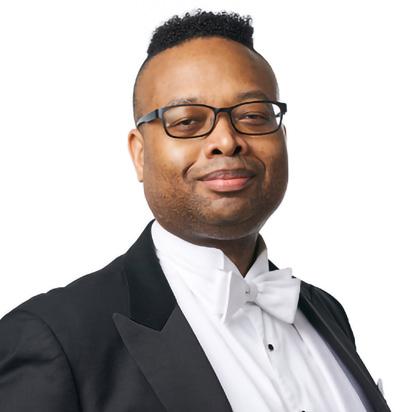
Paul was born in London. It was as a singer that his musical abilities were first noticed, and on the advice of his preparatory school music teacher he auditioned for the Purcell School, a specialist music school, where, over the course of seven years, he studied piano, violin, clarinet and, albeit briefly, trumpet and trombone. At the age of 15, having never really settled with any of these instruments, he took up timpani and percussion and has never looked back.
Paul continued his studies at Trinity College of Music, London. While still a student, he became the Timpani and Percussion tutor at Dulwich College Preparatory School and the Benenden School for Girls (both in Kent). Having completed his postgraduate studies, he began working as a freelance musician in the UK and abroad. Over the years he has performed with the BBC Philharmonic, Orchestra of the Royal Opera House Covent Garden, BBC Symphony, Seoul Philharmonic, City of Birmingham Symphony, Hallé, Royal Philharmonic, National Taiwan Symphony Orchestra, Qatar Philharmonic and Auckland Philharmonia, to name but a few.
Music took Paul to the USA, throughout Europe and to New Zealand before he accepted the position as Section Principal Timpani with the then newly formed Malaysian Philharmonic Orchestra in Kuala Lumpur. During his time in Malaysia, and in addition to his duties as a performer, he maintained a close association with the Education and Outreach department of the MPO.
Following his departure from the MPO in 2012, Paul continued to perform and educate, and in 2015 he became the founding Principal Timpanist of the Chineke! Orchestra, the first majority Ethnically Diverse ensemble to be established in Europe. He also took up the chair as Principal Timpanist with the Orchestra of Opera North, notably performing Wagner’s Ring Cycle six times during 2016.
Having served with Opera North for almost three years, Paul moved to Glasgow to become the Section Principal Timpanist of the RSNO. He is also a timpani tutor at the Royal Conservatoire of Scotland and currently sits on the Board of Trustees for the Association of British Orchestras and Sistema Scotland. During 2020 he hosted a number of radio programmes for Scala Radio, including a series of daily features for the duration of Black History Month.
For the 25/26 season, Paul was offered the Principal Timpani chair with Canada’s National Arts Centre Orchestra, based in Ottawa. He accepted the offer, and has already begun his tenure with NACO, performing a short run of Tosca at the start of September.
Paul was awarded an MBE for services to Music in The Queen’s Birthday Honours 2020.
Ludwig van Beethoven (1770-1827)
Symphony No3 in E flat Major Op55 Eroica
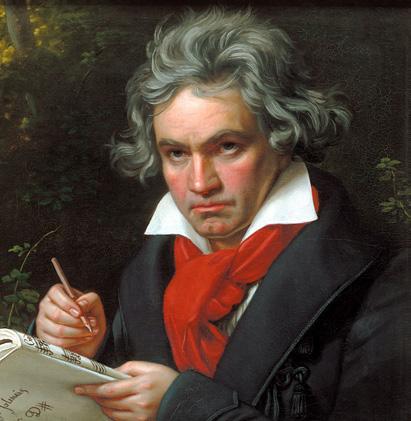
FIRST PERFORMANCE
Vienna, 7 April 1805
DURATION 47 minutes
1. Allegro con brio
2. Marcia funebre: Adagio assai
3. Scherzo: Allegro vivace
4. Finale: Allegro molto
Whether Beethoven was ever an unqualified admirer of Napoleon Bonaparte isn’t clear. But at some stage he made the decision to dedicate his ‘Heroic’ Third Symphony to the French Revolution’s self-made generalissimo and world leader. Then, in 1804, when Beethoven learned that Napoleon had proclaimed himself Emperor, he tore out the dedication in fury, shouting, ‘So he’s just an ordinary being! Now he will trample the rights of men under foot and pander to his own ambition; he will place himself high above his fellow creature and become a tyrant!’ When the Symphony appeared in print two years later, the title page stated simply, ‘Sinfonia eroica, composed in memory of a great man’. That ‘in
memory’ is telling: in 1806 Napoleon was still very much alive.
All the same, Beethoven’s belief in heroism and in the possibility of human beings transforming their political destiny proved more robust. It is that belief that remains relevant to the Eroica Symphony. True, the music abounds in triumphal military imagery: the trumpet and drum triplettaps in the first movement’s final crescendo; the eruptive major-key fanfares at the first big climax of the Marcia funebre (Funeral March); the celebratory horn calls in the trio section of the Scherzo; or the exultant timpani tattoos in the final moments of the Finale. But for many the Symphony has more to say about spiritual struggle and liberation – whether in a personal or political sense is for the listener to decide.
The first movement is one of Beethoven’s most truly heroic creations, brilliantly conveying the effect of epic conflict. The development of the opening theme (presented by cellos after the two sharp opening chords) is so much more than an abstract process: the theme’s ‘adventures’ in the long movement that follows are more like those of a character in a novel or a play. The movement appears to end in triumph – or at least the promise of triumph; which only makes the contrast with the sombre Funeral March that follows all the more extreme. (One wonders how Napoleon might have reacted to a ‘Bonaparte’ symphony that contained a depiction of his own funeral.) This movement’s emotional range –from dignified mourning, to frenzied hope, to depictions of grief in which the music almost literally ‘breaks down’ – is remarkable; and yet the formal control is as impressive as the power of the feelings expressed.
The Scherzo that follows is one of Beethoven’s most exhilarating symphonic dance movements. The writing for the three horns in the central trio section suggests battlefield celebrations to some,
the exuberance of the hunt to others. Then the Finale begins with a terrific orchestral flourish, followed by a skeletal pizzicato figure for strings. Gradually the textures fill out, until the skeletal string figure turns out to be the bass for a joyous theme on high woodwind, then strings. This is the most formally free of the four movements, blending elements of classical variation, sonata form and fugue into a new kind of dynamic superstructure which, at the same time, completes the ‘story’ presented in the first movement. Beethoven knew he had achieved something special here. Years later, in 1817, when asked which was his favourite among his symphonies, he replied without hesitation, ‘The Eroica’.
© Stephen Johnson
If you enjoyed Beethoven’s Eroica Symphony, why not try his Symphony No7 (7-8 Nov).
What was happening in 1805?
2 Apr Hans Christian Andersen, author of fairy tales including The Little Mermaid, was born in Odense, Denmark
26 May Napoleon was crowned King of Italy
4 Jun The first Trooping the Colour ceremony was held at Horse Guards Parade in London
26 Jul The Molise earthquake killed 5,573 people in Molise and Campania, Italy
12 Aug US Army Captain Meriwether Lewis of the Lewis and Clark Expedition reached the hydrological Continental Divide of the Americas at Lemhi Pass on the Montana/Idaho border and crossed to the west
21 Oct At the Battle of Trafalgar, the British fleet defeated a combined French and Spanish fleet, but Admiral Horatio Nelson was fatally shot
23 Oct Following her husband’s death, Madame Clicquot Ponsardin took over his champagne wine business as Veuve Clicquot
20 Nov Beethoven’s only opera, Fidelio, premiered in Vienna, which at the time was under French military occupation
26 Nov Thomas Telford’s Pontcysyllte Aqueduct on the Llangollen Canal in Wales opened. It was 307m long and 38m high, and is still in use today
2 Dec At the Battle of Austerlitz, Napoleon’s French troops decisively defeated a joint Russo-Austrian force


Classics at the Movies
Also sprach Zarathustra
EDINBURGH FRI 14 NOV: 7.30pm
SAT 15 NOV: 7.30pm
Mahler Adagietto from Symphony No5
James Newton Howard Violin Concerto No2
UK Premiere
Barber Adagio for Strings
R Strauss Also sprach Zarathustra
Alexander Shelley Conductor
James Ehnes Violin
Big Noise Govanhill (Glasgow only) Book online


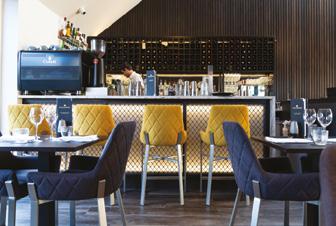




RSNO Benefactors, Patrons and Circle members
We are grateful to all our individual supporters for their generous philanthropy and loyalty. Your support enables the Orchestra to achieve its most ambitious goals and to continue inspiring people across Scotland both on and off the concert stage.
RSNO Benefactors
Sir Ewan and Lady Brown
Gavin and Kate Gemmell
Kat Heathcote and Iain Macneil
Ms Chris Grace Hartness
RSNO Patrons
George Ritchie
Geoff and Mary Ball
Stephen Sweeney
Valerie Wells
Chair Patrons
Assistant Conductor
The Solti Foundation Chair
First Violin
Maya Iwabuchi LEADER
Dunard Fund Chair
Tamás Fejes ASSISTANT LEADER
The Bill and Rosalind Gregson Chair
Ursula Heidecker Allen
The James and Iris Miller Chair
Elizabeth Bamping
The WL and Vera Heywood Chair
Alan Manson
The Hugh and Linda Bruce-Watt Chair
Liam Lynch
Mr Kyle Anderson Weir
Lorna Rough
The Sir Richard Dunbar Chair
RSNO Conductors’ Circle
Ardgowan Charitable Trust
Stina Bruce Jones
Ian and Evelyn Crombie
Kenneth and Julia Greig
Shirley Murray
David and Alix Stevenson
Rolf and Celia Thornqvist
Eric and Karen Young
Learning and Engagement Patrons
William Brown, W.S
The Dundee RSNO Circle Committee
Neil & Nicola Gordon
Professor Gillian Mead, FRSE
Nicholas & Alison Muntz
Maurice & Nicola Taylor Charitable Trust
Second Violin
Marion Wilson ASSOCIATE PRINCIPAL
The Nigel & Margot Russell Chair
Sophie Lang
The Ian & Evelyn Crombie Chair
Emily Nenniger
Mr Jamie & Kyle Anderson Weir
Viola
Tom Dunn PRINCIPAL
The Cathy & Keith MacGillivray Chair
Lisa Rourke SUB PRINCIPAL
The Meta Ramsay Chair
Francesca Hunt
The Rolf and Celia Thornqvist Chair
Beth Woodford
Mr Jamie & Kyle Anderson Weir
Cello
Pei-Jee Ng PRINCIPAL
Mr Jamie & Kyle Anderson Weir
Betsy Taylor ASSOCIATE PRINCIPAL
The Maxwell Armstrong Chair
Kennedy Leitch ASSISTANT PRINCIPAL
The David and Anne Smith Chair
Rachael Lee
The Christine and Arthur Hamilton Chair
Double Bass
Nikita Naumov PRINCIPAL
The Gregor Forbes John Clark Chair
Michael Rae ASSISTANT PRINCIPAL
James Wood Bequest Fund Chair
Flute
Katherine Bryan PRINCIPAL
The David and Anne Smith Chair
Oboe
Adrian Wilson PRINCIPAL
The Hedley Wright Chair
Peter Dykes ASSOCIATE PRINCIPAL
Witherby Publishing Group Charitable Trust Chair
Cor Anglais
Henry Clay PRINCIPAL
In memory of a dear friend, Fiona H
Clarinet
Timothy Orpen PRINCIPAL
The Shirley Murray Chair
Horn
David McClenaghan SUB-PRINCIPAL
The Springbank Distillers Chair
Alison Murray ASSISTANT PRINCIPAL
Mr & Mrs Pierre and Alison Girard
Martin Murphy ASSISTANT PRINCIPAL
The Gordon Fraser Charitable Trust Chair
Trumpet
Christopher Hart PRINCIPAL
Ms Chris Grace Hartness
Katie Smith SUB-PRINCIPAL
The Lady Fraser Chair
Timpani
Paul Philbert PRINCIPAL
Ms Chris Grace Hartness
Percussion
With thanks to the Dot and Syd Taft Chair for their support of the RSNO Percussion Section.
Staff
Chiko Parkinson
COMMUNITY SINGING ASSISTANT
Supported by ScotRail
We are also grateful to those who give but who wish to remain anonymous.
If you would like to discuss how you can become an RSNO Patron, please contact Constance Fraser, Head of Development (Individuals and Partnerships), at constance.fraser@rsno.org.uk
RSNO Circle
Virtuoso
Ms Catherine Y Alexander
Mrs A M Bennett
Mr Alan and Mrs Carolyn Bonnyman
Dame Susan and Mr John Bruce
Stephen and Morny Carter
Francesca and Eoghan Contini Mackie
Dr Clive Criper
Scott and Frieda Grier
Judith and David Halkerston
Iain MacNeil and Kat Heathcote
Martin and Carola Gordon
Miss A McGrory
Miss M Michie
Mr James Miller CBE
Mrs Abigail Morrison
Nicholas and Alison Muntz
Meta Ramsay
Mr and Mrs W Semple
Mr Gregor Stewart
Mr Ian Taft
Claire and Mark Urquhart
Raymond and Brenda Williamson
Margaret Duffy and Peter Williamson
Symphony
Mr John Brownlie
Mr A Campbell
Dr K Chapman and Ms S Adam
Sir Sandy and Lady Crombie
Mr W G Geddes
Elizabeth Gibb
Dr Robert Gibb
Mr I Gow
Mr J D Home
Christine Lessels
Katharine M E Liston
Mrs A McQueen
Mr Iain Percival
Mr and Mrs David Robinson
Ian and Janet Szymanski
Dr C Cradock and Dr S Todd
Nelson and Barbara Waters
Philip Whitely and Robert H Mackay
Concerto
Neil Barton
Miss D Blackie
Dr C M Bronte-Stewart
Dr F L Brown
Mr and Mrs Burnside
David Caldwell
Ms H Calvert
Ross Cavanagh
Myk Cichla
Terry and Joan Cole
Dr J Coleiro
Mr and Mrs B H Cross
Christine and Jo Danbolt
Mr P Davidson
Steven J Davis
Mr and Mrs K B Dietz
Mr C Ffoulkes
William Findlay
Mr and Mrs M Gilbert
Simon and Fiona Guest
Lord and Lady Hamilton
Mrs S Hawthorn
P Hayes
Dr and Mrs P Heywood
Ms H Kay
Mr and Mrs W Kean
Nicholas Kilpatrick
Christine Lessels
Morag MacCormick
Mr and Mrs Marwick
Mr S Marwick
Mrs Sandra Maxwell
Mr and Mrs G McAllister
Mrs M McDonald
Dr A H McKee
Mr Rod McLoughlin
Morag Millar
Mrs B Morinaud
Dr and Mrs D Mowle
Mr K R and Dr C C Parish
Ms A and Miss I Reeve
Mrs E M Robertson
Dr and Mrs G K Simpson
Mrs Henrietta Simpson
Dr Norma Smith
Mr and Mrs A Stewart
David and Helen Strachan
Mr I Strachan
Mr G Stronach
Dr G R Sutherland
Mr and Mrs J B Watson
Mr and Mrs D Weetman
Helen and Peter Wilde
David W Wren
Roderick Wylie
Sonata
Mr and Mrs G H Ainsley
Mr K Allen
Dr A D Beattie
Mrs H Benzie
Mr R Billingham
Lord and Lady Borthwick
John Bradshaw and Shiona Mackie
Mrs Bryan
Andrew Burrows
Mrs C M Campbell
Miss S M Carlyon
Amanda Carter-Fraser
Alan Clevett
Lady Coulsfield
Adam and Lesley Cumming
Mrs C Donald
J Donald and L Knifton
Mr John Duffy
Mr R M Duncan
Brigadier and Mrs C C Dunphie
Mrs E Egan
Mr R Ellis
Mr R B Erskine
Dr E Evans
Dr A Ewing
David Ferrier
Kenneth Forbes
Mr D Fraser
Ms J Gardner
Philip and Karen Gaskell
Mrs M Gibson
Mrs M Gillan
Mrs J K Gowans
Dr J and Mrs H Graham
Professor and Mrs A R Grieve
Dr P J Harper
Dr N Harrison
Mr and Mrs R J Hart
Bobby and Rhona Hogg
Mr and Mrs F Howell
Mrs A Hunter
Inez Hutchison
Professor R N Ibbett
Thomas Jakobsen Burns
Geoffrey and Elizabeth Johnston
Ms K Lang
Dr D A Lunt
Mrs Jean C Martin
Mr and Mrs J Martin
Ms S McArthur
Jean McCutcheon
Mr M McGarvie
Mrs S McGeachan
Hon Lord McGhie
Dr Colin McHardy
Ms H L McLaren
Margaret McLay
Libby McLean
Mr and Mrs B Mellon
Kathryn Michael
Mr I Mills
Mrs P Molyneaux
Kenneth M Murray
Bruce and Christine Nelson
Alastair Ogilvie
Mr and Mrs K O’Hare
Mr and Mrs K Osborne
Dr G Osbourne
Mr A Ownsworth
Mr R Parry
John Paterson
Misses J and M Penman
Mr J W Pottinger
Miss J A Raiker
Mr M Rattray
Alastair Reid
Ms F Reith
Dr and Mrs D Robb
Anne Robertson
Mr I Robertson
Ms A Robson
Sheriff Linda Ruxton
Mrs J Shanks
Mr J A Shipley
Dr M J and Mrs J A Shirreffs
Richard and Gillian Shirreffs
Ana Smith
Mrs E Smith
Mr M Smith
Dr and Mrs B Stack
Mrs Lorna Statham
Mrs R F Stewart
Mr and Mrs B Tait
Lisbeth Thoms
Dr and Mrs T Thomson
Mr C Turnbull
Dr Morag Ward
Dr Alex Watson
Mr W Watters
Alan Weddell
Mr and Mrs D Weetman
Mr R Young
Thank you to all our members of the Circle, including Overture members and those who wish to remain anonymous.
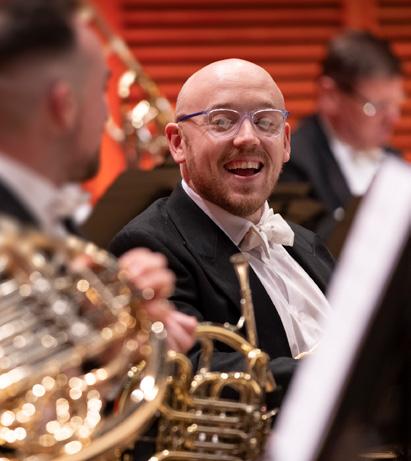
If you would like to discuss how you can become an RSNO Circle member, please contact Polly Lightbody, Individual Giving and Partnerships Officer, at polly.lightbody@rsno.org.uk

Charitable Trusts and Foundations
Charitable trusts and foundations have a distinguished history of supporting the RSNO, both on and off the stage. From one-off donations for specific concerts and musicians’ chairs, to multi-year funding for our community engagement initiatives, including our Schools Programme, every grant in support of our work is truly appreciated. We are grateful to the following trusts and foundations for their generosity:
Aberdeen Endowments Trust
ABO Sirens Fund
Adam Mickiewicz Institute
Alexander Moncur Charitable Trust
Alma & Leslie Wolfson Charitable Trust
Adam Mickiewicz Institute
Balgay Children’s Society
Bliss Trust
Boris Karloff Charitable Foundation
Boshier-Hinton Foundation
Brownlie Charitable Trust
Castansa Trust
CMS Charitable Trust
Common Humanity Arts Trust
Cookie Matheson Charitable Trust
Cruden Foundation
David and June Gordon Memorial Trust
Dunclay Charitable Trust
Educational Institute of Scotland
Ettrick Charitable Trust
Fidelio Charitable Trust
Forteviot Charitable Trust
Gannochy Trust
Gaelic Language Promotion Trust
Garrick Charitable Trust
Gordon Fraser Charitable Trust
Harbinson Charitable Trust
Hobart Charitable Trust
Hugh Fraser Foundation
James Wood Bequest Fund
Jennie S Gordon Memorial Foundation
Jean & Roger Miller’s Charitable Trust
Jimmie Cairncross Charitable Trust
John Scott Trust Fund
John Mather Trust
Jones Family Charitable Trust
JTH Charitable Trust
Leach Family Charitable Trust
Leng Charitable Trust
Lethendy Charitable Trust
Marchus Trust
McGlashan Charitable Trust
Meikle Foundation
Mickel Fund
Miss E C Hendry Charitable Trust
Miss Jean R Stirrat’s Charitable Trust
Murdoch Forrest Charitable Trust
N Smith Charitable Settlement
Nancie Massey Charitable Trust
Noel Coward Foundation
Northwood Charitable Trust
Nugee Foundation
Pear Tree Fund for Music
Pump House Trust
Q Charitable Trust
R J Larg Family Trust
Ronald Miller Foundation
Rowena Alison Goffin Charitable Trust
Scops Arts Trust
Scott Davidson Charitable Trust
Scottish Enterprise
Solti Foundation
Souter Charitable Trust
Stanley Morrison Charitable Trust
Stevenston Charitable Trust
Sylvia Aitken Charitable Trust
Tay Charitable Trust
Tillyloss Trust
W A Cargill Fund
W M Mann Foundation
W M Sword Charitable Trust
Walter Scott Giving Group
Wavendon Foundation
Weir Charitable Trust
Zich Trust
We are also grateful to a number of trusts that wish to stay anonymous.
If you would like more information about our work and how you can make a difference, please contact Niamh Kelly, Trusts and Projects Manager, at niamh.kelly@rsno.org.uk
A big Thank You to our supporters
FUNDERS





PRINCIPAL MEDIA PARTNER



CORPORATE SUPPORTERS



PRINCIPAL TRANSPORT PARTNER


BROADCAST PARTNER

PARTNERS
Adelaide Place • Age Scotland • Black Lives in Music • Charanga • Children’s Classic Concerts
Children’s Hospices Across Scotland • Classic FM • Douglas Academy • Dundee Science Centre
Dunedin Consort • Edinburgh Zoo • Education Scotland • Fanzclub • Gig Buddies • GMAC Film
Heads of Instrumental Teaching Scotland • Hebrides Ensemble Kibble • Luminate • Marine Conservation Society
MARSM • Music Education Partnership Group • ParentZone • The Pyramid at Anderston
Royal Conservatoire of Scotland • Scottish Book Trust • Scottish Chamber Orchestra
Scottish Refugee Council • Sistema Scotland • St Mary’s Music School • Tayside Healthcare Arts Trust
Trees for Life • University of Glasgow • V&A Dundee • Visible Fictions
With thanks to Mr Hedley G Wright and the Springbank Distillery for their support of the RSNO
If you would like more information about sponsorships, corporate partnerships or fundraising events with the RSNO, please contact Constance Fraser, Head of Development (Individuals and Partnerships), at constance.fraser@rsno.org.uk
Royal Scottish National Orchestra
PATRON
His Majesty The King
ARTISTIC TEAM
Thomas Søndergård MUSIC DIRECTOR
Patrick Hahn
PRINCIPAL GUEST CONDUCTOR
Ellie Slorach
ENGAGEMENT CONDUCTOR
Kellen Gray
ASSOCIATE ARTIST
Neeme Järvi
CONDUCTOR LAUREATE
Alexander Lazarev
CONDUCTOR EMERITUS
Stephen Doughty
DIRECTOR, RSNO CHORUS
Patrick Barrett
DIRECTOR, RSNO YOUTH CHORUSES
CHIEF EXECUTIVE
Alistair Mackie
CHIEF EXECUTIVE
Dr Jane Donald
DEPUTY CHIEF EXECUTIVE
Charlotte Jennings
EXECUTIVE ASSISTANT (MATERNITY LEAVE COVER)
Nicola Kelman
EXECUTIVE ASSISTANT (MATERNITY LEAVE)
PLANNING
Tammo Schuelke
DIRECTOR OF ARTISTIC PLANNING
Xander van Vliet
ARTISTIC PLANNING MANAGER
Richard Payne
HEAD OF LIBRARY SERVICES
Megan Bousfield
LIBRARY ASSISTANT
Christine Walker
CHORUS MANAGER
ORCHESTRA MANAGEMENT
Matthias Van Der Swaagh
HEAD OF ORCHESTRA MANAGEMENT
Brodie Smith
DEPUTY ORCHESTRA MANAGER
OPERATIONS AND PRODUCTION
Craig Swindells
HEAD OF PRODUCTION
Ashley Holland
STAGE MANAGER
Dylan Findlay
ASSISTANT STAGE MANAGER
Ted Howie
FACILITIES MANAGER
RSNO BOARD OF DIRECTORS
Elected Directors
Gregor Stewart CHAIR
Gail Blain
HONORARY TREASURER
Ruth Binks
Kayla-Megan Burns
Ken Hay
Kat Heathcote MBE
Don Macleod
David Robinson
John Stewart
David Strachan
Cllr Edward Thornley
NOMINATED DIRECTOR
Julia Miller
COMPANY SECRETARY
LEARNING AND ENGAGEMENT
Andrew Stevenson
DIRECTOR OF ENGAGEMENT
Anna Crawford
ENGAGEMENT DELIVERY MANAGER (MATERNITY LEAVE)
Rachel Naismith
ENGAGEMENT DELIVERY MANAGER (MATERNITY COVER)
Maisie Leddy
ENGAGEMENT PRODUCER
Chiko Parkinson
COMMUNITY CHORUS AND PARTNERSHIPS COORDINATOR SUPPORTED BY SCOTRAIL
EXTERNAL RELATIONS
Dr Jane Donald
DIRECTOR OF EXTERNAL RELATIONS
Carol Fleming
HEAD OF MARKETING
Constance Fraser
HEAD OF DEVELOPMENT (INDIVIDUALS AND PARTNERSHIPS)
Kirsten Reid
HEAD OF DEVELOPMENT (TRUSTS AND PROJECTS) (MATERNITY LEAVE)
Lisa Ballantyne
PARTNERSHIPS OFFICER
Keilidh Bradley
GRADUATE ANIMATOR
Ian Brooke
PROGRAMMES EDITOR
Fred Bruce
TRUSTS AND PROJECTS ADMINISTRATOR
Clara Cowen
MARKETING MANAGER
Seonaid Eadie
EXTERNAL RELATIONS OFFICER
Katie Kean
COMMUNICATIONS AND MARKETING OFFICER
Niamh Kelly
TRUSTS AND PROJECTS MANAGER
Player Directors
Katherine Bryan
Christopher Hart
David Hubbard
William Knight
David McClenaghan
Lorna Rough
SCHOOLS ADVISORY GROUP
Ruth Binks
Pam Black
Norman Bolton
Martin Greig
Mae Murrary
Polly Lightbody
INDIVIDUAL GIVING AND PARTNERSHIPS OFFICER
Graham Ramage
GRAPHIC DESIGNER
Sam Stone
INFORMATION SERVICES MANAGER
Ross Williamson
VIDEO PRODUCER (MARKETING)
AUDIO
Hedd Morfett-Jones
STUDIO MANAGER
Sam McErlean
MEDIA MANAGER AND AUDIO ENGINEER
Ahan Sengupta
TRAINEE AUDIO ENGINEER
FINANCE AND CORPORATE SERVICES
Susan Rennie
HEAD OF FINANCE
Jade Wilson
FINANCE OFFICER
Abby Dennison
FINANCE ADMINISTRATOR
Phoebe Connolly
FINANCE ASSISTANT
Contents © Copyright RSNO and named authors.
Too hot to Handel


